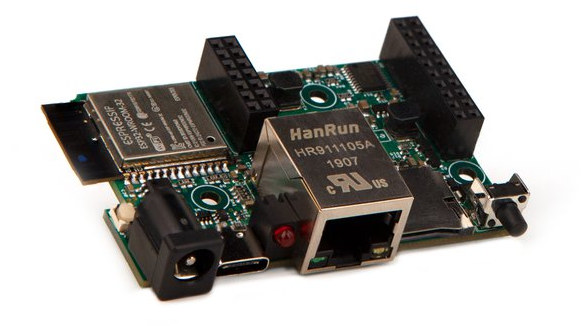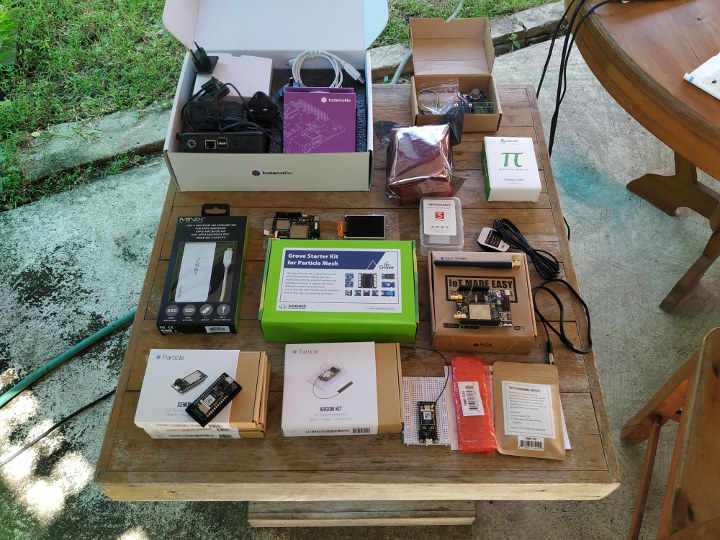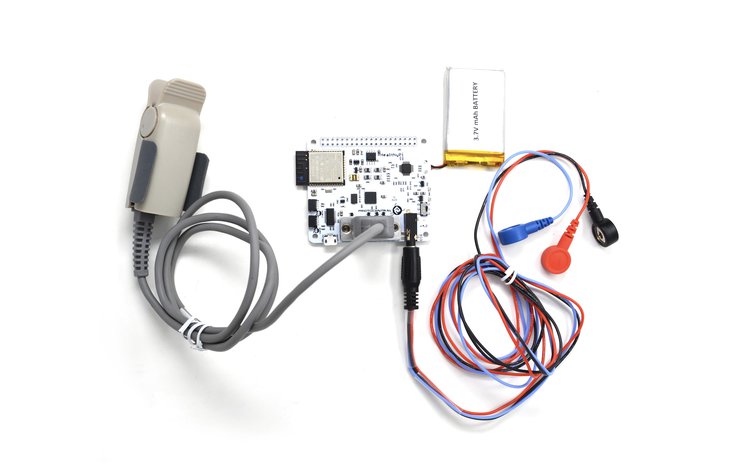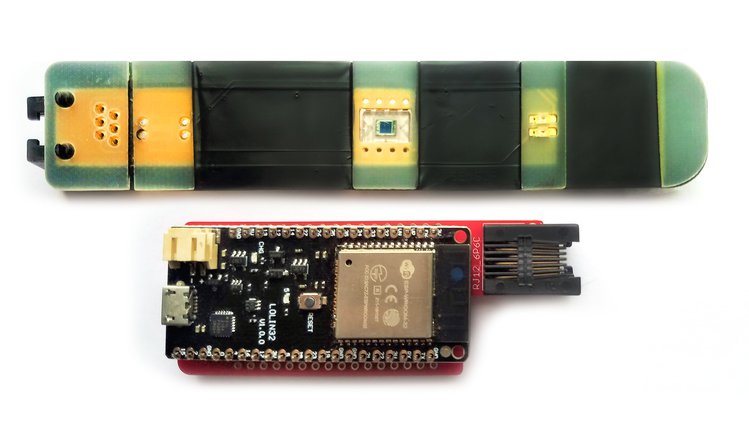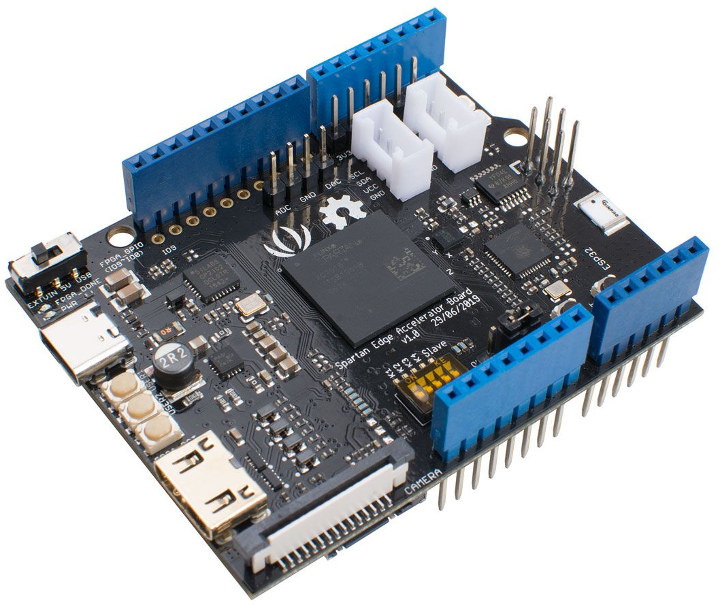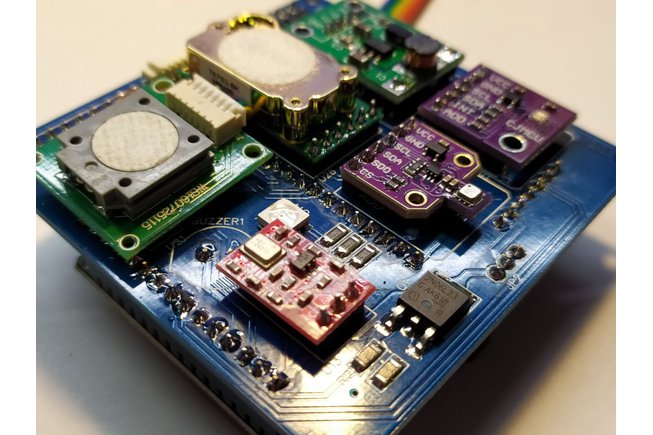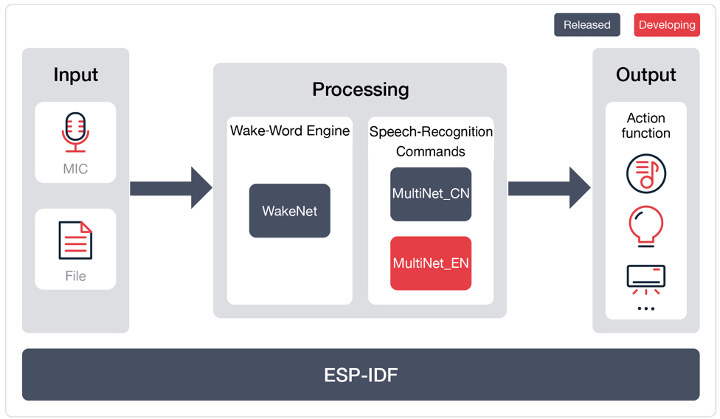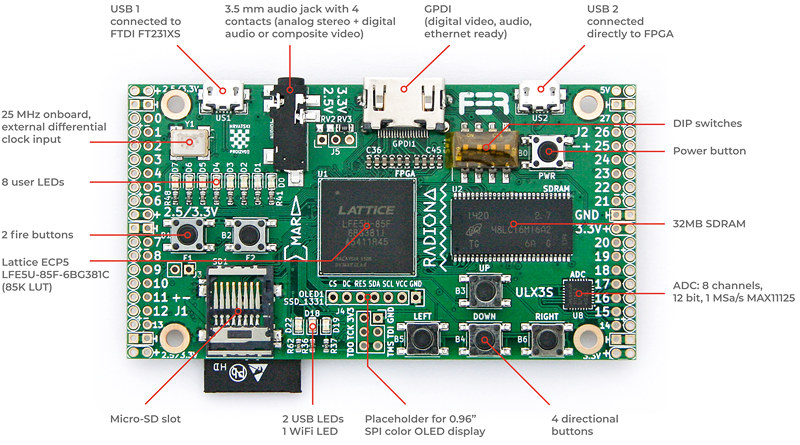We’ve already covered several ESP32 boards with Ethernet including Olimex ESP32-GATEWAY and Silicognition wESP32, and I’ve just noticed Espressif also made its own with ESP32-Ethernet-Kit. Modtronix Engineering has another take with esp32MX-E board that beside Ethernet also exposes a USB-C port, a MicroSD card slot, and also adds an STM32F0 microcontroller acting as an I2C I/O expander. esp32MX-E specifications: Wireless Module ESP32 dual-core LX6 microprocessor at 160 or 240 MHz, 4 MB Flash, 520 KB SRAM Wi-Fi 4 802.11 b/g/n Bluetooth 4.2 BR/EDR & BLE Storage – MicroSD card slot USB – USB Type-C connector for programming, power, and Virtual COM port Expansion via 14-pin and 20-pin female headers 22x I/O pins of which 4 are inputs only. 4x 5 V tolerant I/O pins Not all I/Os are available when the SD Card is used Programmable pull-up and pull-down resistors on most inputs Secondary MCU – I²C I/O expander implemented […]
Giveaway Week Winners – November 2019
We just had another of our yearly “Giveaway week” on CNX Software with 7 prizes including Arm and RISC-V development boards, NB-IoT tracker, USB-C hub, as well as development kits based on ESP32 or ESP8266 WiSoCs. People just had to comment within a 48 hours period, and we would randomly select a winner each day. We now have all confirmed winners with a strong start from Europe, Asia catching up mid-week, before with Poland and Brazil taking the week-end prizes: Balena Fin Developer Kit – Laurent H, FRANCE WisCellular NB-IoT & eMTC GPS Tracker – Jimmy, SWEDEN MINIX NEO S1 USB-C Hub with 120GB built-in SSD – Jeroen, BELGIUM Maixduino Sipeed M1 RISC-V AI Kit – Nguyen Tung, VIETNAM ANAVI Gas Detector Starter Kit – Bumsik Kim, SOUTH KOREA Particle Mesh IoT Development Kit – Wojciech Lubicz-Lapinski, POLAND NanoPi M4V2 SBC & Metal Case Kit – Thiago Tavares, BRAZIL I […]
HealthyPi v4 Wearable WiFi Vital Signs Monitor Follows Raspberry Pi HAT Form Factor
HealthyPi v4 Campaign Starts ProtoCentral has started a Crowd Supply campaign for the HealthyPi v4, its latest vital signs monitoring dev kit. The HealthyPi v4 is wearable, wireless, and can be mounted on a Raspberry Pi. The units are all open source and stand-alone made for end-users, students as well as researchers and developers. An Improvement on HealthyPi v3 The recent increase in health-related tech has fueled ProtoCentral’s desire to bring its HealthyPi v3 up to current usability and development standards. The retail versions of the HealthyPi v4 are made specifically to work in conjunction with the Android OS for ease of use and mobility. Also, the Raspberry Pi HAT form factor is also supported in this version of the device. Articles On Health-Related Development The articles that have touched on health-related issues and topics from our archives, as well as very recently include HEGduino a neurofeedback monitor and […]
HEGduino IoT Real-time Neurofeedback Platform Aims to Increase Brain Function (Crowdfunding)
The HEGduino Alaskit has developed a way to measure the blood-oxygen levels in the brain and create a biofeedback system that is said to increase brain function. The new tech is called HEGduino and is a connection between a biofeedback method and an IoT platform. Past Reported Medical SBCs In the past, CNX has covered several health-based platforms for the Raspberry Pi (Healthy Pi HAT) and ESP32 (Hearty Patch, ECG reader) medical SBCs. HEG Particulars The HEG in HEGduino stands for Hemoencephalography, a neurofeedback technique similar to EEG measurements in brainwave activity. The difference is HEG can measure neural activity based on neurovascular coupling, which can be approached through near infrared and passive infrared techniques – both of which are ways to cerebral blood flow can be matched to metabolic activity. HEG Functions The HEG is a way to alter brain function through a series of “training” sessions based […]
Spartan Edge Accelerator Arduino Compatible Board Combines ESP32 & Spartan-7 FPGA
Xilinx Spartan FPGAs have been around for a while, and a few years ago we covered Spartan-6 FPGA boards such as Spartixed and miniSpartan6+. Seeed Studio has now launched another Xilinx Spartan board with WiFi and Bluetooth connectivity. Spartan Edge Accelerator Board follows Arduino UNO form factor and combines a more recent Xilinx Spartan-7 FPGA with Espressif Systems ESP32 WiFi + Bluetooth chip. Spartan Edge Accelerator specifications: FPGA – Xilinx Spartan-7 XC7S15 FPGA with 12.8K Logic Cells and 360Kb block RAM WiSoC – Espressif Systems ESP32 SoC with 802.11 b/g/n 2.4GHz WiFi and Bluetooth 4.1 BLE Storage – SPI flash, MicroSD card slot Video Output – Mini HDMI Video Input – CSI Camera Interface with support for OV5640 sensor USB – USB type-C port Expansion Arduino UNO headers (5V) FPGA I/O header DAC output and ADC input header (via 8-bit ADC1173 chip) 2x Grove connectors (I2C and digital I/O) Debugging […]
Mastak Modular Air Quality Monitor Kit Supports CO2, Dust, Formaldehyde, Ozone and other Sensor Modules
The Mastak Indoor Air Quality Monitor Kit Medium Systems Limited, a UK company has released the Mastak, SoMs designed in a mechanical range that allows for indoor air quality monitoring, with a data IoT cloud service, and communications that include NB-IoT, 5G, WiFi, BLE, and LTE-M. The system is a new addition to the air monitoring market place. There have been reports on other air quality monitors in past articles that covered quick start and user experience with Sonoff SC WiFi, vThings WiFi CO2 Monitor, and the ANAVI Gas Detector. The Specs The ecological modules are all compatible and contain processor, peripherals and the sensors for data monitoring and collection, as well as the necessary power electronics. The modules were designed too and allow the user to arrange the systems into custom arrangements and place in unique form factors. There are a number of options also, for even further expandability […]
Espressif ESP-Skainet Voice Assistant Offers Wake Word Engine and Speech Commands Recognition for Embedded MCUs
Skynet is finally here! OK, not quite, but at least we do have ESP-Skainet now courtesy of Espressif Systems. ESP-Skainet is an intelligent voice assistant that features the company’s WakeNet wake word engine and MultiNet speech commands recognition. WakeNet WakeNet has been specifically designed for low-power MCUs such as ESP8266 or ESP32 with a low memory footprint (20KB RAM) and a high calculation speed that makes it capable of achieving a high success rate for wake word detection even in noisy environments. Tested in the company’s upcoming LyraT-Mini audio board that combines an ESP32-WROVER-B module and a codec, WakeNet achieves a 97% wake word success rate at a one-meter distance, and 95% three meters away in a quiet environment. ESP-Skainet wake-up engine ships with the wake-up word “嗨乐鑫” (Hi Lexin), which translates in “Hello Espressif”, and supports up to five wake words. You can use customize wake words as well, […]
ULX3S Education Board is Powered by Lattice Semi ECP5 FPGA & ESP32 WiFi/BLE Module
A few days ago, we covered the KiCAD designed OrangeCrab open-source hardware board powered by a Lattice Semi ECP5 FPGA, and compliant with Adafruit Feather form factor. It’s turned out there’s another Lattice Semi ECP5 FPGA board that’s also designed with KiCAD and open source hardware. Radiona ULX3S differs are it’s larger and exposes more I/Os since it was specifically designed to meet the meets of the digital logic course at the Faculty of Electrical Engineering and Computing (FER) of the University of Zagreb in Croatia. ULX3S specifications: FPGA – Lattice ECP5 LFE5U-85F-6BG381C with 84K LUT System Memory – 32MB SDRAM @ 166 MHz Storage – 4–16MB Quad-SPI Flash for FPGA config and user data storage; MicroSD slot Audio – 3.5 mm jack with 4 contacts (analog stereo + digital audio or composite video) Video – Digital video (GPDI General-Purpose Diferential Interface) with 3.3V-5V I2C bidirectional level shifter Display – […]


